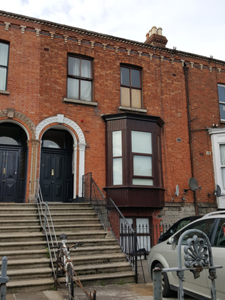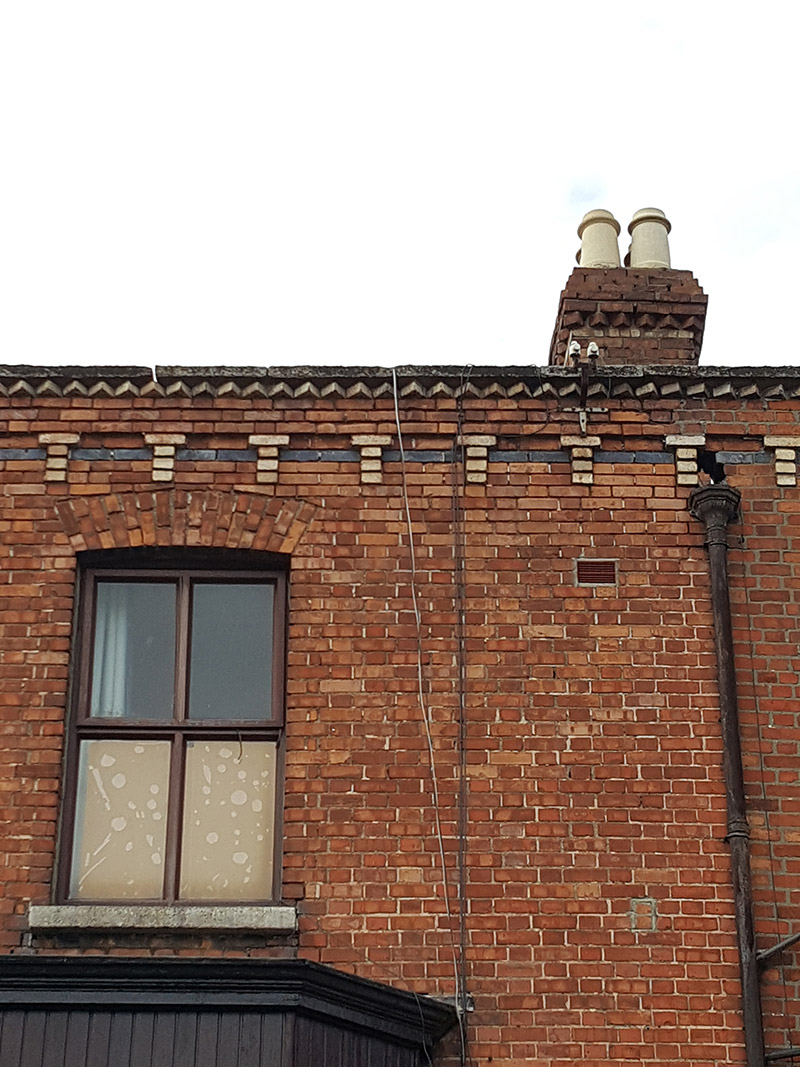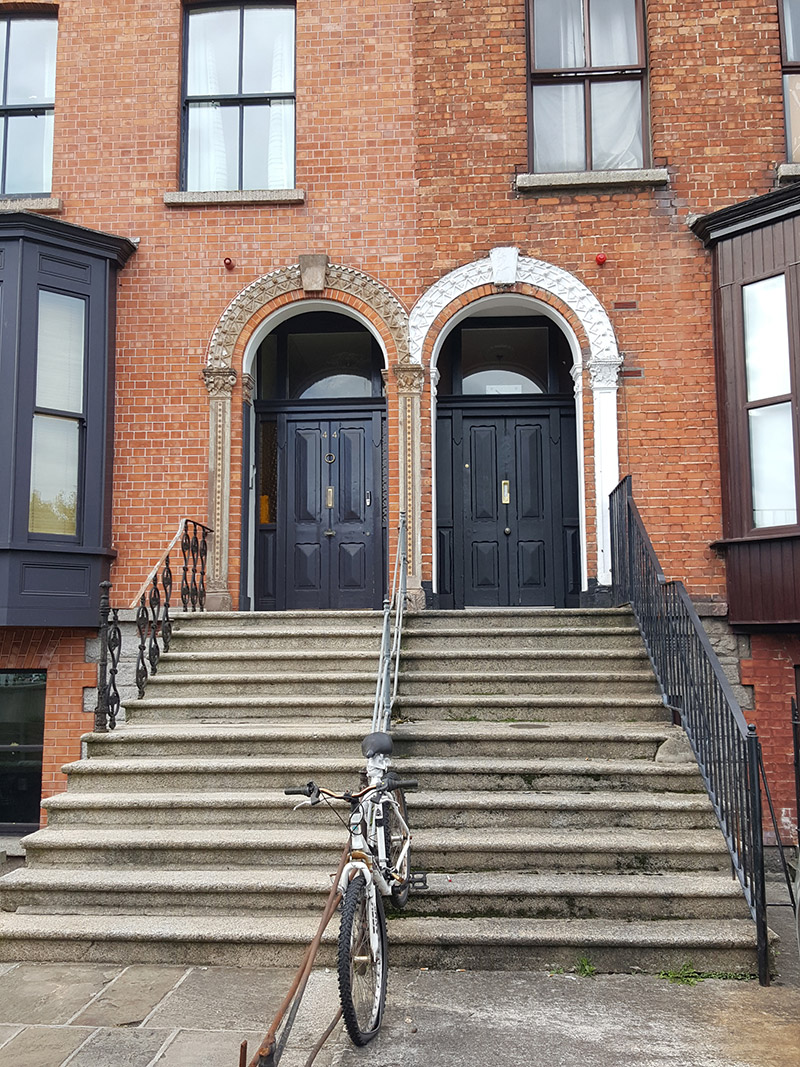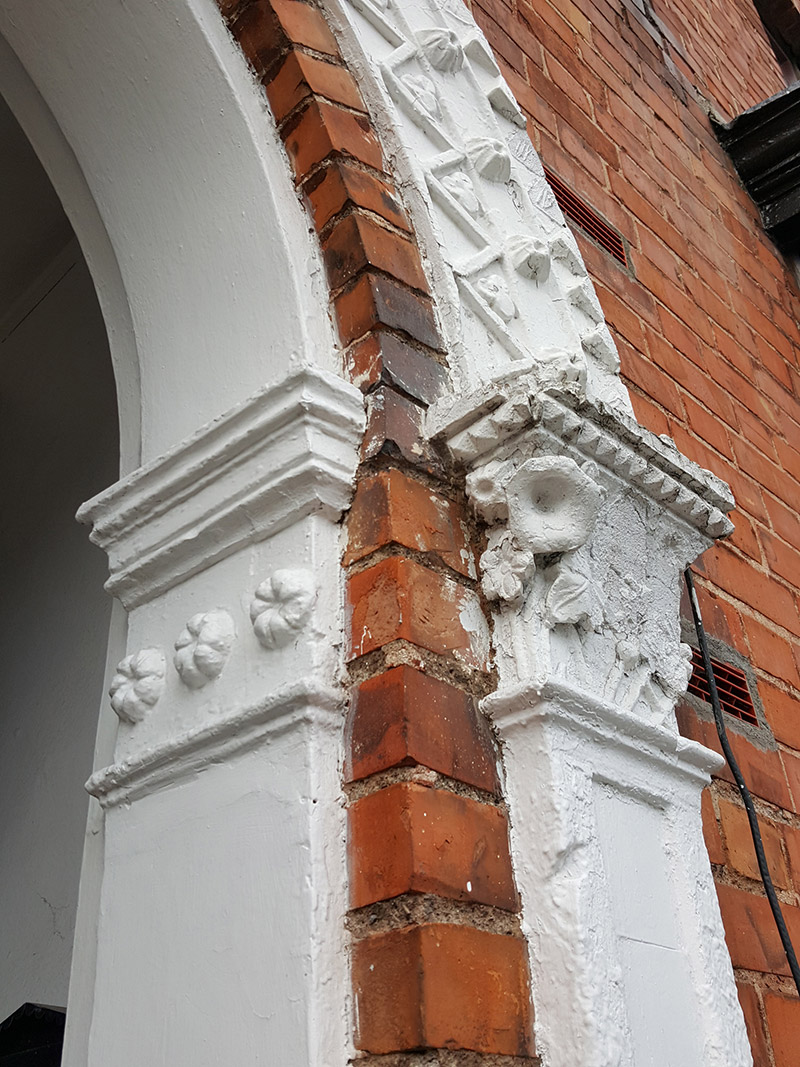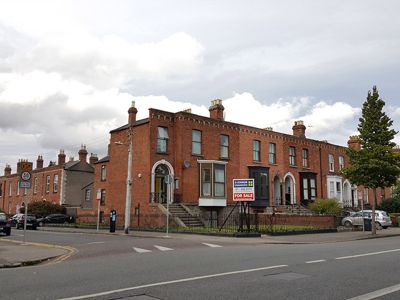Survey Data
Reg No
50110090
Rating
Regional
Categories of Special Interest
Architectural, Artistic
Original Use
House
In Use As
Apartment/flat (converted)
Date
1865 - 1885
Coordinates
315237, 232732
Date Recorded
27/07/2017
Date Updated
--/--/--
Description
Terraced two-bay two-storey former house over raised basement, built c. 1875 as one of terrace of nine. canted-bay window to ground floor of front (south) elevation, and three-storey return to rear. Now in use as apartments. M-profile pitched roof, hipped to west, having parapet with cut granite coping and sawtooth and polychrome brick cornice, red brick chimneystacks with sawtooth detail and clay pots, and some cast-iron rainwater goods. Red brick walling to front, laid in Flemish bond, with cut granite plinth course over rusticated snecked granite basement walling; rendered to rear; and with yellow brick to rear wall of return. Slightly camber-arch window openings with granite sills, raised red brick surrounds to basement openings, having timber panelled apron and carved cornice to canted-bay, and with replacement windows. Round-headed deeply recessed doorway with stepped surround comprising moulded render surround with moulded imposts and having red brick surrounding, in turn surrounded by panelled render pilasters with inset encaustic tiles, foliate capitals, archivolt with chevron and ball-flower motif, and plain keystone; carved timber panelled doorcase to inner opening, with timber pilasters, plain overlight and sidelights and carved timber panelled door. Approached by shared flight of eleven nosed granite steps with coal-hole cover to platform. Decorative cast-iron railings with foliate motif flanking upper part of steps. Cast-iron gate having decorative finials, flanked by round-headed panels with anthemion finials and having matching railings set on cut granite plinth walls to front garden boundary.
Appraisal
This house was constructed as part of a terrace of nine that share similar detailing, including artistic flourishes in the form of carved brick eaves cornices. It is one of four that display rich doorcases. The intact front garden, with decorative iron railings enhances the site. The former Emor demesne, between Heytesbury and Clanbrassil Streets, was sold in 1860 and was developed from 1868 by Thomas Kelly, proprietor of the City Saw Mills in Thomas Street.

